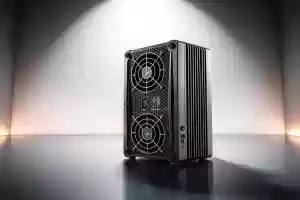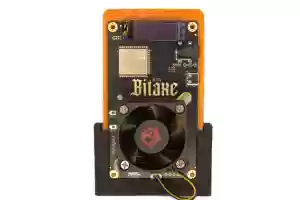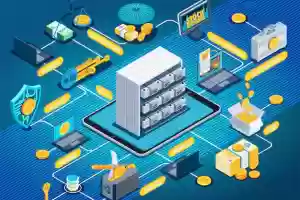Beginner’s Guide to Mining Dogecoin in 2025 – Tips for Success and Maximum Rewards
 12 Mar 25
12 Mar 25
If you've ever wondered how to turn your computer’s power into cryptocurrency, mining dogecoin might just be your answer. Known for its ease of access and a welcoming community, Dogecoin mining stands out due to its relatively low barriers to entry compared to other cryptocurrencies like Bitcoin. Beyond earning rewards, miners play a critical role in keeping the Dogecoin blockchain secure and operational. Curious about how to get started? You're in the right place, this guide will walk you through everything you need to know.
https://www.youtube.com/watch?v=M7knO8KDmSo
Understanding Dogecoin Mining: Basics and Mechanics
Mining dogecoin is a fascinating process that powers the Dogecoin blockchain while offering users a unique opportunity to earn cryptocurrency rewards. Unlike traditional investments, this activity combines technical know-how with the use of specialized equipment. Let’s break down what makes mining dogecoin special and how it compares to Bitcoin mining.
What Makes Dogecoin Mining Unique
Dogecoin mining stands out for several reasons, offering features that differentiate it from other cryptocurrencies:
- Unlimited Supply: Unlike Bitcoin's capped supply of 21 million coins, Dogecoin has no maximum limit. This means miners can continue earning DOGE rewards as long as mining activity persists.
- Fast Block Times: Dogecoin produces a new block approximately every minute. Comparatively, Bitcoin takes around 10 minutes per block. This quick interval allows for faster transaction processing and rewards.
- Scrypt Algorithm: Dogecoin employs the Scrypt algorithm instead of Bitcoin's SHA-256. This algorithm is designed to be memory-intensive, which makes Dogecoin mining more accessible to GPU miners while also reducing the dominance of mining hardware manufacturers.
These distinctive features make Dogecoin mining not only beginner-friendly but also an interesting choice for those wanting to explore cryptocurrency without intense competition.
Comparing Dogecoin Mining to Bitcoin Mining
To better understand Dogecoin mining, it helps to compare it with Bitcoin mining, which operates differently in several key aspects:
- Reward Structure: With every completed block, Dogecoin miners receive a steady reward of 10,000 DOGE. On the other hand, Bitcoin miners experience halving events, where rewards are reduced by 50% every four years.
- Network Difficulty: Dogecoin adjusts its mining difficulty every 240 blocks, responding quickly to changes in miner participation. Bitcoin’s difficulty, however, updates every 2,016 blocks, creating less frequent but more significant fluctuations.
- Hardware Requirements: Bitcoin mining requires powerful ASICs specialized for SHA-256, which makes it resource-intensive. Dogecoin uses Scrypt, which allows both GPU and ASIC mining, offering flexibility to users with different setups.
For those interested in solo mining and the factors affecting success in this approach, discover strategies for solo mining on Find the Block. It explains how solo mining can offer advantages and challenges depending on the cryptocurrency.
Both Dogecoin and Bitcoin present unique opportunities, but Dogecoin’s friendly mining environment makes it particularly appealing for newcomers looking to get started with blockchain technology.
Getting Started with Dogecoin Mining
Embarking on your Dogecoin mining journey involves setting up the right tools and making informed decisions about hardware and strategy. Each step plays a crucial role in ensuring your mining efforts are profitable and efficient. Let’s explore what you’ll need to get started.
Setting Up a Wallet for Mining
Before you can start mining dogecoin, you’ll need a secure place to store your earnings. This is where a Dogecoin wallet comes into play.
- Hot Wallets: For ease of access, a hot wallet like the official Dogecoin Core Wallet is a reliable choice. It connects online for instant transactions and immediate reward transfers. However, it is more vulnerable to hacks due to its internet connectivity.
- Cold Wallets: If long-term security is a priority, cold wallets, such as Ledger or Trezor hardware wallets, might suit you better. These keep your cryptocurrency offline, shielding it from cyber threats.
Don't overlook the importance of securing your private keys. Think of these as the master password to your funds; if lost, regaining access is near impossible.
Choosing Your Hardware: ASICs vs GPUs
Selecting the right mining hardware is crucial for performance and profitability. Here’s how ASICs (Application-Specific Integrated Circuits) and GPUs (Graphics Processing Units) compare:
- ASIC Miners:
- Pros: High efficiency, tailored for mining Scrypt algorithms (used by Dogecoin).
- Popular Options: Bitmain Antminer L7 (9.16 Gh/s) and Goldshell Mini DOGE.
- Cons: Expensive, lacks flexibility for mining other cryptocurrencies. Initial investment can range between $10,000-$20,000.
- GPU Setups:
- Pros: Affordable upfront cost, versatile for mining various coins, can be repurposed for other tasks.
- Popular Choices: NVIDIA RTX 3080 or AMD RX 6800 XT.
- Cons: Lower efficiency for Dogecoin mining compared to ASICs.
Maintenance Tips:
- Invest in cooling systems like fans or air conditioning to manage the high heat output of mining rigs.
- Ensure a stable power supply with surge protectors to prevent electrical damage.
- Regularly clean and inspect your hardware to extend its lifespan.
Selecting Your Mining Strategy
How you choose to mine dogecoin can significantly influence your experience and earnings. Here are the most popular strategies:
-
Pool Mining:
- How It Works: Join forces with other miners by combing your computational power to mine faster. Rewards are distributed based on contribution.
- Pros: Steady, consistent payouts. Lower hardware requirements as the workload is shared.
- Cons: Pool operators take a fee (usually 1-3% of earnings). You’re also reliant on the pool's reliability.
- Tip: Research trustworthy pools to start with, like those discussed in this guide about solo and shared Bitcoin mining options.
-
Cloud Mining:
- How It Works: Rent computing power from a mining service for a fee.
- Pros: No need for hardware setup. Ideal for beginners with minimal technical skills.
- Cons: Earnings can be lower due to recurring fees from cloud operators. Risks include potential scams.
-
Solo Mining:
- How It Works: Mine independently using your own hardware.
- Pros: Full block rewards of 10,000 DOGE for every block you solve.
- Cons: High costs for equipment and electricity. Less predictable income since you’re solely responsible for finding blocks.
Each method has its trade-offs. Pool mining is great for steady results, cloud mining works for those looking to avoid hardware hassle, and solo miners are for the enthusiasts chasing bigger, though infrequent, rewards.
Maximizing Profitability in Dogecoin Mining
When it comes to mining dogecoin, profitability is at the forefront of every miner's mind. Because costs can add up quickly, balancing expenses and rewards is essential to ensure mining efforts result in gains rather than losses. Let’s break it down into actionable steps so you can start maximizing profits effectively.
Calculating Mining Costs and Returns
Before you fire up your mining rigs, take a moment to assess costs versus returns. The simplest way to do this is by using online mining calculators, which are designed to provide quick and realistic estimates of your potential profitability. Here’s how:
- Enter Your Details: Input your hardware’s hashrate, power consumption, and electricity costs. For consistent accuracy, use tools like the Dogecoin Mining Calculator on CoinWarz or WhatToMine's DOGE Profitability Calculator.
- Evaluate Hardware Depreciation: Mining equipment, such as ASICs or GPUs, has a lifespan. Spread the cost of your hardware over its operational life to include depreciation in your calculations.
- Account for Pool and Maintenance Fees: If you’re pool mining, fees will usually range from 1% to 3% of your earnings. Maintenance costs, like cooling hardware or electricity surges, should also be factored in.
Breaking down these key elements helps you understand whether mining dogecoin will cover your costs and generate profits in the long term.
Overcoming Common Challenges in Mining
Like any technological venture, Dogecoin mining comes with its share of challenges. Tackling these head-on will increase efficiency and reduce downtime.
Common Issues and Solutions:
- Overheating Hardware: Similar to a car engine running too long, mining rigs can overheat. The solution? Invest in quality cooling setups like external fans or build customized airflow systems. Monitoring tools such as HWMonitor can also help you keep tabs on temperature levels.
- High Electricity Costs: Electricity can quickly eat into profits. Use energy-efficient hardware, and set operations during off-peak hours when electricity costs are lower. If solar energy is an option, it could help drastically cut power expenses.
- Software Errors: Mining software glitches can cause operational pauses. Regular updates and proven programs like CGMiner or EasyMiner can minimize errors. Ensure your mining software is configured to restart automatically after crashes.
You don’t have to tackle these issues alone. The mining community often shares advice on forums or social media platforms.
Staying Updated on Market Trends
Staying ahead in Dogecoin mining requires you to be informed about the cryptocurrency market. Key factors like Dogecoin’s current price, network difficulty, and mining activity trends have a massive impact on your mining profitability.
Where should you go for reliable market insights? Check out trusted sites such as Minerstat's Dogecoin Calculator and CryptoCalc Online, both offering real-time updates on profitability metrics. Understanding these trends enables you to make smarter decisions, whether that's adjusting mining power or timing withdrawals.
In addition, keep an eye on cryptocurrency exchanges where Dogecoin is actively traded. It’s crucial because shifting prices can make or break the profitability equation. Watching these trends is similar to keeping an eye on the weather when planning a picnic, you want everything to align just right to maximize your results.
Ensuring Long-term Success in Dogecoin Mining
As more people venture into the world of mining dogecoin, it’s important to not only focus on immediate profitability but also the strategies that ensure your mining stays successful in the long term. Achieving sustained success means adapting to changing technologies, market conditions, and environmental impacts. Below, we tackle two critical aspects of long-term success: upgrading hardware and software, and diversifying your mining strategies.
Upgrading Hardware and Software
Mining dogecoin starts with efficient hardware and up-to-date software. However, the tools that were great for mining a year ago may not be sufficient today due to increased network difficulty and competition. Let’s break down how to keep up:
-
When Should You Upgrade Your Equipment?
It’s crucial to upgrade when your current mining rig becomes consistently unprofitable or inefficient. But how do you know? Use profitability calculators like WhatToMine's DOGE Profitability Calculator to assess the performance of your current hardware. If your profit margins are dwindling due to rising energy costs or weakening hardware capacity, it’s time for an upgrade. -
Focus on Energy Efficiency
The era of energy-hungry GPUs and outdated ASIC miners is fading. Modern mining hardware, such as the Bitmain Antminer L7, is designed to offer superior hash rates at a fraction of the power consumption. If you haven’t already, transitioning to energy-efficient options can save costs and keep your setup competitive. -
Don't Neglect Software Updates
Staying competitive in mining isn’t just about hardware, your software needs to keep up too. Regularly updating your mining software (such as CGMiner or EasyMiner) ensures compatibility with the latest network protocols and can even improve your mining efficiency. Some updates also address bugs that could be slowing down performance.
Embracing new methods is key as the cryptocurrency landscape evolves. Find out more in this guide about configuring hardware for mining and how to stay ready for shifting mining paradigms.
Diversifying Your Mining Approach
Staking all your efforts into a single strategy might bring temporary results but is rarely sustainable for long-term success. Diversifying your mining methods can mitigate risks and improve rewards.
-
Explore Merged Mining
Did you know that Dogecoin supports merged mining with Litecoin? This means you can mine both cryptocurrencies simultaneously without additional costs. It’s like getting two paychecks for doing one job! If your hardware is sitting idle between jobs, merged mining optimizes its usage, significantly boosting earnings. Explore more on this feature in Dogecoin's Mining Guide on Dogepedia. -
Switch Between Cryptocurrencies
Dogecoin operates on the Scrypt algorithm, shared by other cryptocurrencies. This compatibility allows you to experiment with mining additional coins using the same hardware. Tools like MultiMiner allow you to easily switch between coins, helping hedge against Dogecoin price volatility. Research profitability metrics for coins like Litecoin, and make informed decisions about which cryptocurrencies could complement your mining portfolio. -
Leverage Cloud Mining as a Backup
If hardware maintenance or electricity costs cut into your profits, consider supplementing with cloud mining. It’s not as lucrative as physical mining rigs but can provide a steady income stream with lower upfront costs. For insights into cost-effective cloud mining, consult step-by-step mining resources like this guide from KuCoin.
Diversifying is about minimizing risks and extending opportunities. From merged mining to testing supplementary coins, these strategies adapt your small-scale operations into a multi-stream revenue approach.
By focusing on both hardware longevity and mining diversity, miners can maintain profitability and reduce exposure to market risks over time. These steps ensure your dogecoin mining setup stands the test of evolving market and technological trends.
Conclusion
Mining dogecoin remains an accessible entry point for beginners and a worthwhile pursuit for dedicated enthusiasts. Its Scrypt algorithm and robust community support make it a practical choice for those navigating cryptocurrency mining. However, staying profitable in this dynamic space requires constant adaptation to changes in technology, mining difficulty, and electricity costs.
Whether through investing in efficient hardware or exploring strategies like merged mining, the key to success lies in informed decision-making. Dogecoin mining isn’t just about earning rewards; it’s about fostering the network and embracing opportunities to innovate within the crypto ecosystem.
So, if you’re ready to join the world of Dogecoin mining, now’s the time to take the first step, strategize, set up, and start mining your way to potential rewards!





























